Along the C measuring stick
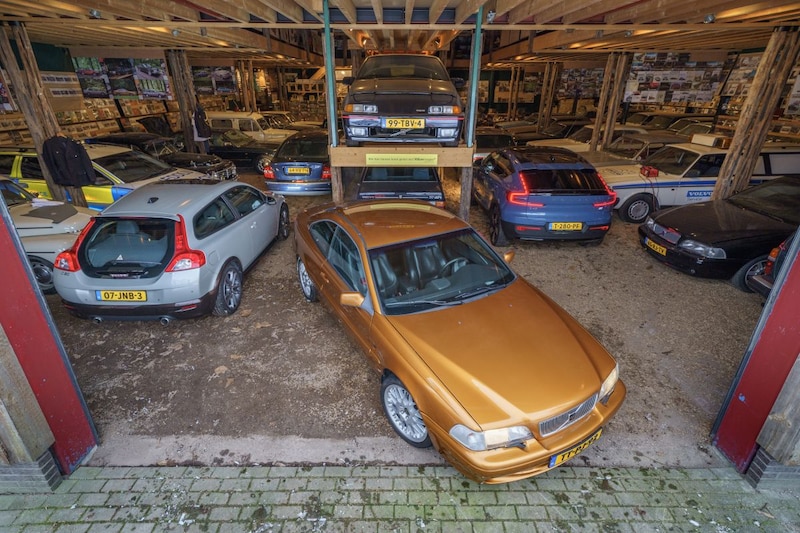
Volvo has a special history with coupes, or models that the Swedish brand labels as such. There is no discussion about the C70, but what about other C’s, such as the C30 and C40? We put our endurance test C40 (which will now be called EC40) against the coupe yardstick to check whether it is perhaps not a bit high for a C.
For Volvo’s first coupe we have to go back to January 1960, when the curtain was pulled off the P1800 at the Brussels Salon. The graceful lines of this 2+2 can be attributed to Pelle Petterson. That is the son of Helmer Petterson, the man who developed the PV444, better known as Kattenrug. There is a special story attached to that. Volvo boss Gunnar Engellau had asked the Italian design houses Ghia and Frua to make a proposal for a sports car. They both came up with two options, to which Helmer Petterson secretly added a fifth proposal: that of his son. You guessed it: Engellau chose exactly that proposal, and that was politically awkward. To avoid crooked faces, Frua – in the presence of Pelle Petterson – adjusted some final details of the design so that Volvo could stick that name on it.
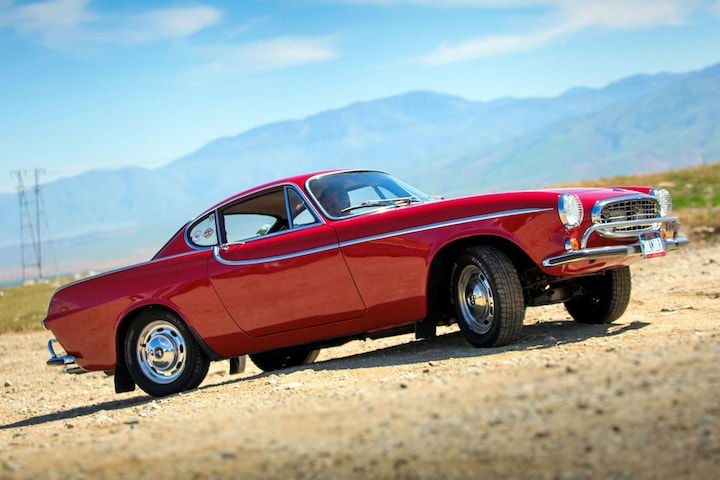
The P1800 has had a successful career, not least due to its prominent role in the TV series The Saint, in which the coupe serves as the means of transport for the charismatic protagonist Roger Moore. The fact that Moore drives the P1800 is based on a strange combination of circumstances. The production team of The Saint would like to see their hero drive an E-type and turned to Jaguar for this. Their request was rejected, causing the production team to switch to Volvo. It charges nicely for the P1800’s and the Swedes even make some mock up interiors for the studio recordings. It doesn’t cost Volvo a kroner and it generates a huge amount of positive publicity. The P1800 is thus forever linked to The Saint, or vice versa.
In the spirit of the Corvette, there was almost a P1900
Now that we are in the historical corner: prior to the introduction of the P1800, Volvo, builder of solid, sensible automobiles, tried to bring a sporty roadster to the market in 1954. In the spirit of the Corvette, the P1900 has a carbon fiber body. Quality problems and a complete lack of interest from the market result in a merciless flop; barely seventy cars see the light of day. With the P1800, leaning on the reliable technology of the Amazon, Volvo fared better a few years later and in 1971 the coupe was joined by the 1800 ES after almost 40,000 copies. That is no longer a coupe but a shooting brake, a la Reliant Scimitar. Up to the A-pillar, the 1800 ES, including doors, is identical to the P1800, after which the bodywork is completely different. Decades later, the characteristic design of the rear was a great source of inspiration for the 480 and the C30. We will come back to the latter. When the 1800 ES goes out of production in 1973, Volvo has no direct successor, coupe or shooting brake. It was not until 1977 that the 262C appeared, a coupe that was at odds with the P1800 in terms of design language. The 262C is large, boxy and a bit bulky. In fact, it is nothing more than a two-door 264 ‘chopped’ at Carrozzeria Bertone in Italy, mainly intended for the American market. Volvo applies the same recipe to the successor 780, this coupe is also developed and built by Bertone in Turin. The calendar then turns to 1986, the year in which the 480 also debuts. With its glass tailgate it is the spiritual successor to the 1800 ES. But is it a coupe?

Volvo 1800 ES.
What is a coupe?
Because when do you call a car a coupe? What is the definition? Our Language goes succinctly and talks about ‘a certain model of car with a sporty line and no or a small back seat’. According to Wikipedia it is ‘a car model with a shorter roof and a downward sloping sporty body shape at the rear. In almost all cases, the driver/passenger area can be entered through only two or three doors. Two doors if the coupe is based on a sedan, three doors if the coupe is based on a hatchback. In summary, the minimum requirements for a car to be called a coupe are a sloping roofline and fewer than four doors. Four-door coupe, come on in!

In order not to make this story unnecessarily complicated, we will ignore the Mercedes CLSs of this world for the moment. After all, we should already focus on the coupe SUV, a phenomenon that has seen an incredible – and for many incomprehensible – boom in recent years. What once started with the maligned SsangYong Actyon has spread like an oil slick across almost all car brands via the BMW X6. It is a rather controversial body style. It’s mainly the whole idea of building a high car and then lowering it with a sloping roofline, resulting in limited headroom for the rear passengers. In fact, it is purely an aesthetic story; a coupe usually looks more elegant and/or sportier. As far as that is possible if the basic shape is an oversized SUV. The irony is that you often pay more for sacrificing interior space. At least at Volvo it does. If you put our endurance test C40 Recharge (the name of which recently changed to EC40) next to an XC40 Recharge (now called EX40), the price difference is exactly €4,500 in favor of the more spacious XC40.

Volvo C40, which has again been renamed EC40.
Archetype coupe
Our C40 may be a coupe in name – and yes, it has a sloping roofline and therefore a cramped rear seat – with its four doors and high body shape, it is still miles away from what the average car enthusiast envisions when he looks at a coupe thinks. Then you think of something like a Volvo C70, especially the first generation. Perhaps the archetypal coupe: stylish and sporty. Low and elongated; proportionally completely balanced. Two large doors and a back seat where you as an adult have no business being. Look at it, what a beauty. We managed to get our hands on an early copy from July 1998, in the characteristic introductory color Saffron Pearl. The black B-pillar emphasizes the sloping A- and C-pillars. Furthermore, everything that could be black, such as bumpers, handles, mirror covers and rub strips, has been neatly sprayed, making the body nice and clean.
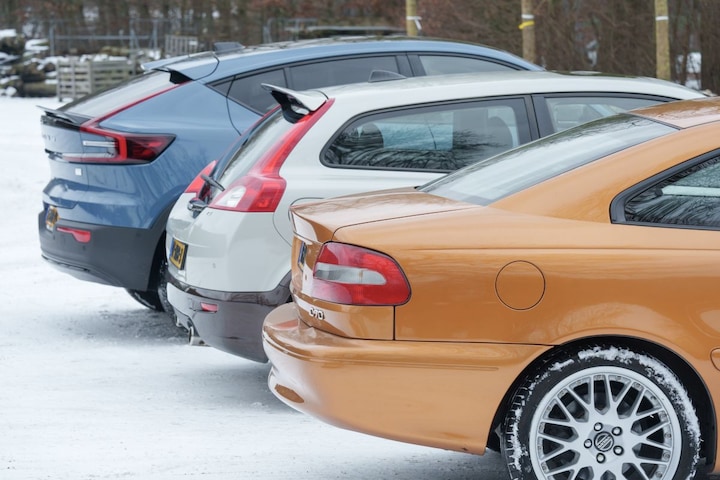
Yet there are enough accents in the design to keep it from looking ‘bare’. For example, look at the subtle crease in the hood, the sturdy shoulders containing a subtle ‘character line’ that runs from front to back along the flanks of the C70. The rounded headlights form a beautiful whole with the modest grille. Add to that four well-filled wheel arches and a rear without unnecessary frills, and you have a textbook example of a tasteful coupe. You can leave something like that to Ian Callum. It is no coincidence that other classics of his, such as the Aston Martin DB7 and Jaguar XK, show similarities with the C70. At the time, Callum was working at TWR (Tom Walkinshaw Racing), under the supervision of Peter Horbury. TWR also helped develop the C70. Nice detail: in the 1996 film The Saint, protagonist Simon Templar, played by Val Kilmer, drives a red C70. A big nod to the P1800.
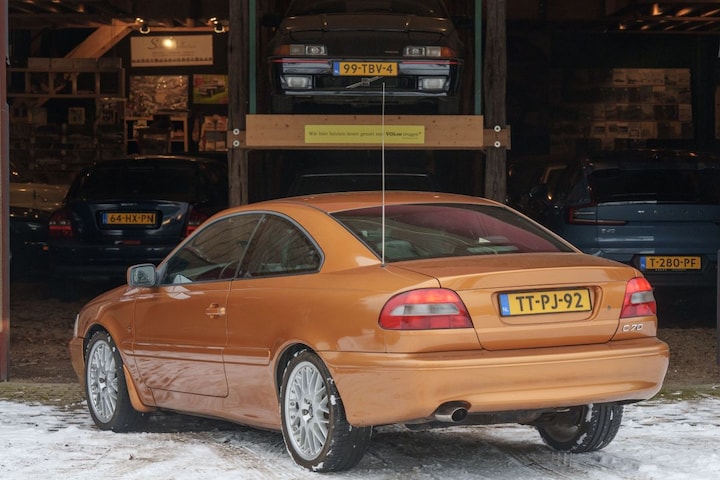

The first Volvo C70, it was also available as a convertible. With the second C70, Volvo combined the coupe and convertible into one car.
How should we place the C30?
If the C40 is the furthest away from what a coupe should be and the C70 is exactly that in all its fibers, how should we place the C30? Volvo gave the model a C in the model name in 2006, but that does not immediately make it a coupe. On the other hand, it is not a typical three-door hatchback either, the lines are just a little too different for that. Moreover, there was no five-door hatchback of the C30, as you had, for example, of an Alfa 147, Audi A3 and BMW 1-series, the main competitors of that time. Its sloping roofline, tapered rear side windows and glass tailgate echo the 1800 ES and 480, but the C30 is not as elongated as those models. Rather short and stocky. Firm and muscular. Especially as a 220 hp T5, as we have it today. With this five-cylinder engine you want your C30, in that characteristic two-tone color scheme with a chocolate brown frame on the underside.

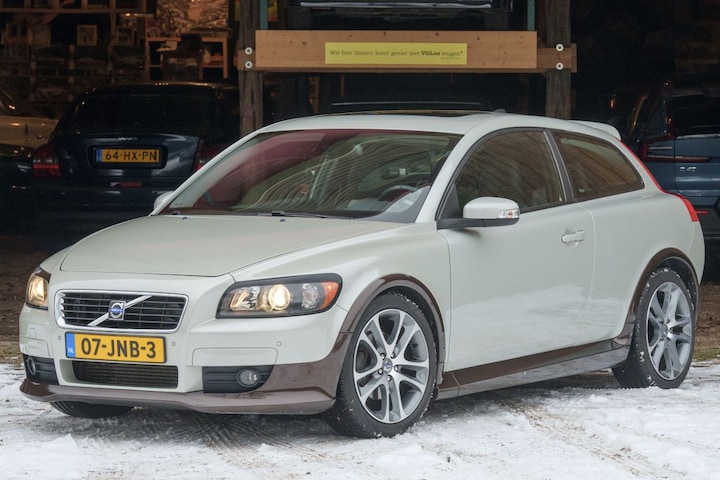
C30 more hatchback than coupe
Just like the C70, the C30 needs little fuss on the outside to make the design interesting. The hood is completely flat and tapers towards the front, it is the panels above the front wheels that provide the much-needed relief. The shoulder line starts civilly, but widens towards the back. Here too, a black B-pillar to emphasize the coupe feeling. The C30 has a relatively ‘thick’ butt and the shape of the rear lights can be seen as a thin LED strip on the C40. Nice to see that Volvo is returning successful design elements through the decades.
Now that we have put the three C’s along the coupe yardstick, we can conclude that the C40 is many figurative centimeters short. The C30 is still a special model, but ultimately more hatchback than coupe. That leaves the C70, a coupe as it was intended!

Volvo’s other coupes
P1800 (1961–1973)
The progenitor. Was joined in 1972 by the 1800 ES, a shooting brake.

262C (1977–1981)
Drawn by Volvo’s Jan Wilsgaard, developed and built by Bertone.
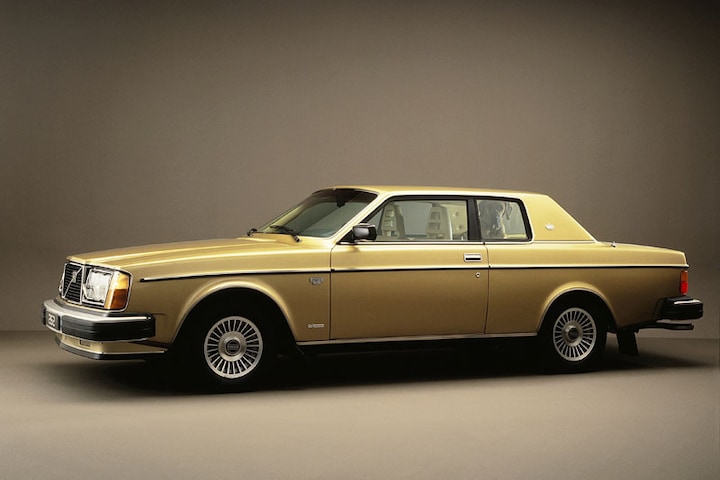
780 (1986–1990)
Same recipe as with the 262C, but with a roof that was only lowered by 1 (instead of 10) cm.

480 (1986–1995)
Just like the C30, not a real coupe, but certainly not a standard hatchback either.

C70 (2006–2013)
Coupé-convertible with steel folding roof, a project by Volvo and Pininfarina.

Polestar 1 (2019-2022)
Okay, it’s not a Volvo, but it doesn’t matter much. What a beauty.
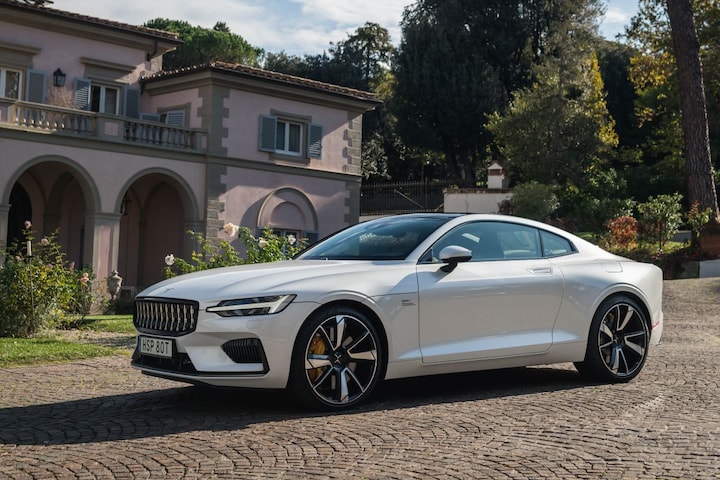
– Thanks for information from Autoweek.nl